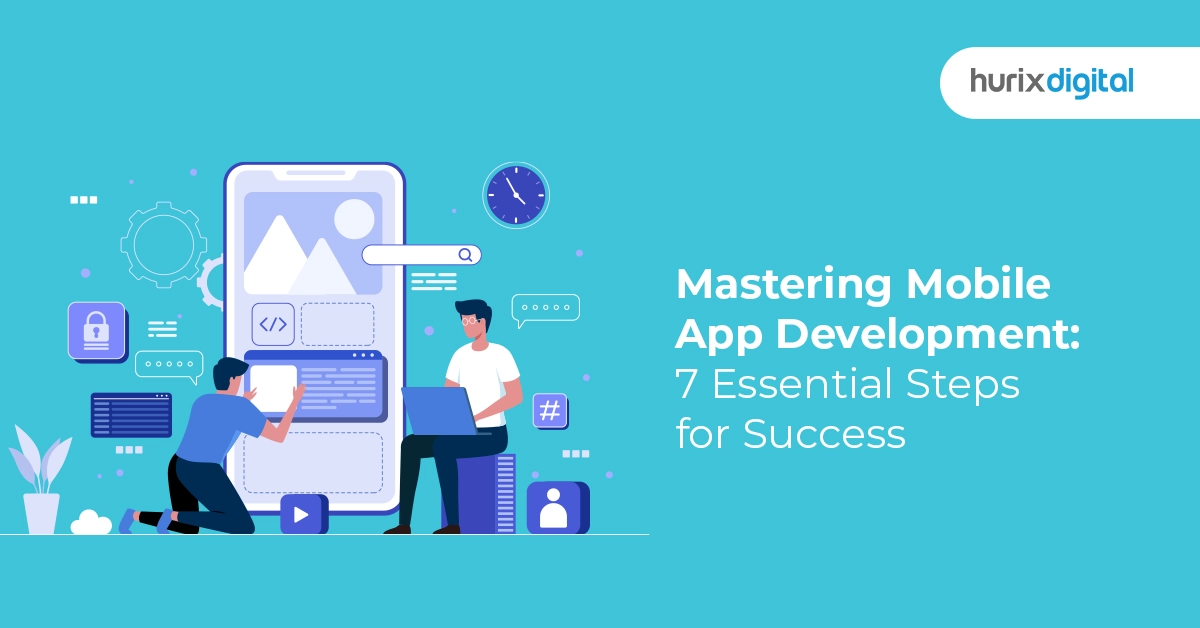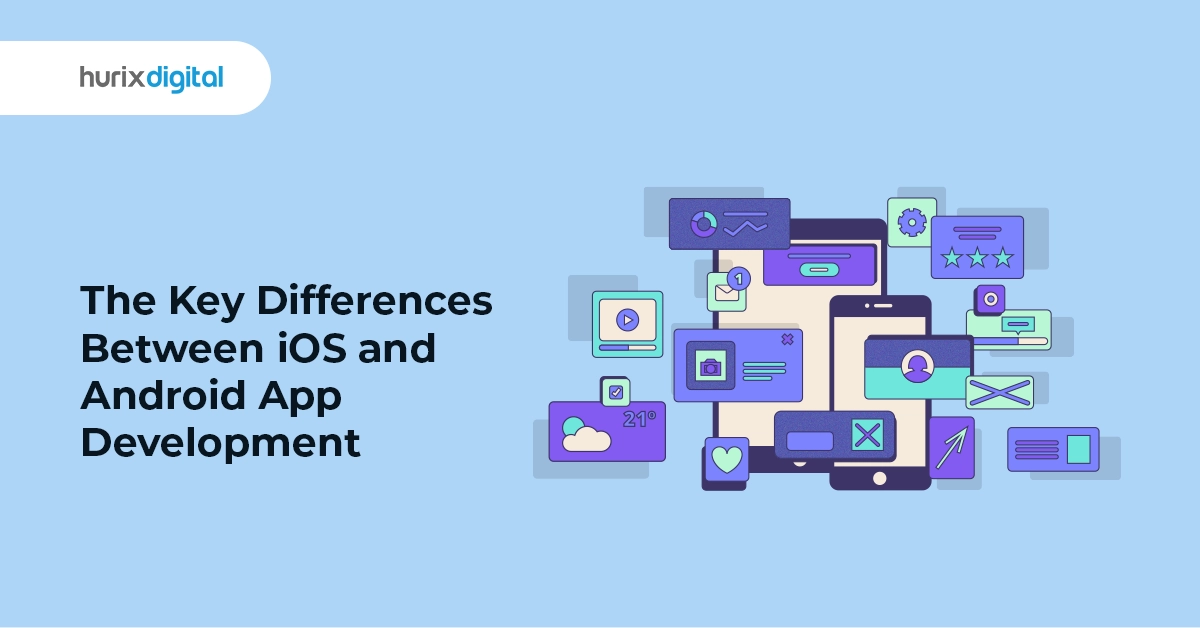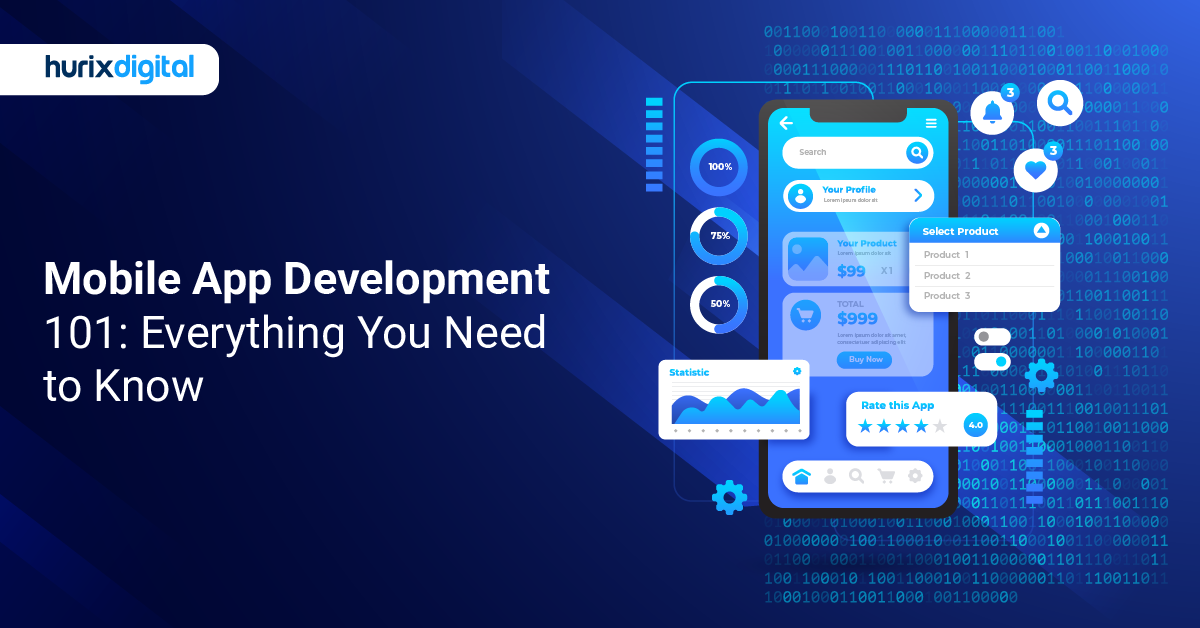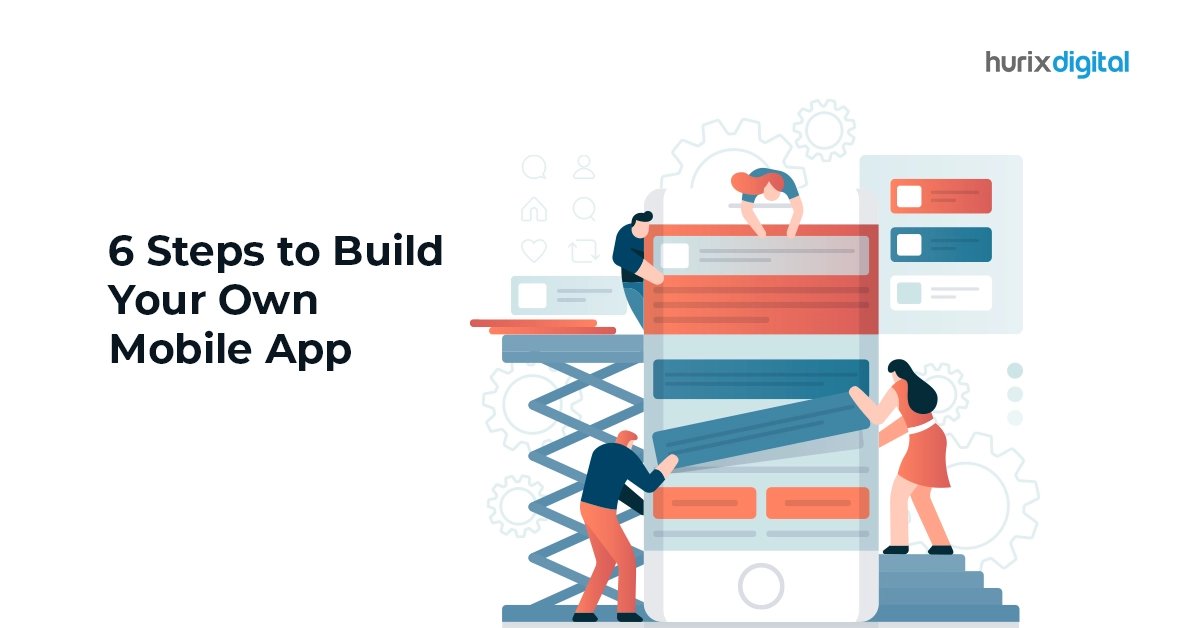
Mastering Mobile App Development: 7 Essential Steps for Success
Summarize with:
Research shows that in the year 2027, the mobile app market is expected to grow massively and hit a phenomenal $756 billion. Therefore, firms are willing to seize the substantial business prospects provided by this sector due to its expansion.
As a result, organizations are enthusiastic about leveraging the rapidly changing market produced by ever-advancing technology, which presents several opportunities for customer interaction via mobile solutions.
This guide will walk you through all seven key steps in creating a mobile app, making it easy for you to develop an application that entices users and stands out. Let’s start!
Table of Contents:
7 Essential Steps for Successful Mobile App Development
Here are seven practical app development steps that can help you achieve success:
1. Crafting Your Mobile App Strategy
Before diving into mobile app development, it’s essential to chart a clear strategy. This means defining what your app will do, who it’s for, and how it will succeed.
To ensure your app launch is a hit, it needs to solve a real problem and provide value that users will appreciate.
First, determine the precise issue that your software will help consumers with. Then, familiarise yourself with your target market’s needs, preferences, and behavioral patterns. Finally, conduct market research to ensure that there is a market for your app.
Here’s how you can do it:
- Understanding your adversaries is crucial; overlooking them can lead to catastrophic outcomes.
- By analyzing user feedback and dissecting features, you can pinpoint areas for enhancement and create an app that outshines competitors.
- Determining how your app will stand out from the competition by identifying its unique value proposition
- Decoding your target audience’s current preferences and prevailing trends helps you pinpoint gaps in the market.
2. Analysis and Planning
Here, we turn your idea for an app into a detailed plan for its creation by clarifying how the app will work, ranking which components are most important, choosing the best technology to use, and continually improving prototypes with user inputs.
Here’s what you need to do in this context:
- Develop a future-oriented plan outlining your app’s evolution. Begin with a precise overview of the actions your app will perform.
- Consider non-functional requirements, encompassing aspects like performance, security, and scalability.
- Identify the Minimum Viable Product (MVP), a core feature set for the initial launch, while drafting future functionalities in a prioritized sequence.
3. Designing UI/UX
This is a vital part of the app-making process, where you need to translate your app’s functionalities into an intuitive and engaging user experience (UX) through meticulous user interface (UI) design.
Here’s what you need to do:
- Build on the information architecture and workflow diagrams that map all potential user interactions.
- Create low-fidelity wireframes or visual blueprints that depict the app’s core functionalities and user flows without intricate design details.
- To maintain design consistency throughout the app, establish comprehensive style guides. To ensure a cohesive user experience, these guidelines cover important design aspects including fonts, color schemes, space, buttons, and other visual components.
- Keep the design uniform on all screens to guarantee a smooth user experience.
- Create interactive prototypes simulating the complete user experience and workflow. It allows for the identification of any potential design or functionality issues before development begins.
Also Read: Mobile App Development Trends to Watch in 2024
4. Developing Your App
The carefully crafted UI/UX mockups are transformed into a mobile application that is both functional and engaging. This phase typically demands the most time and necessitates a skilled team of developers.
Here’s what it involves:
- Development Methodology: The agile development methodology is an industry-standard practice that breaks down development into iterative cycles. Development, testing, and review are all a part of each cycle, which enables quick response to requirements changes and ongoing improvement.
- Team Composition: The development team’s composition hinges on your app’s specific requirements. For native apps (iOS or Android), separate engineers will be assigned to each platform to ensure optimal performance.
- Frontend Development: Considering the limitations of mobile devices (memory, battery life), code efficiency must be prioritized while crafting an intuitive and responsive interface that delivers a seamless user experience.
- Backend Development: Backend development focuses on the server-side logic that powers your app. Building on the previously established technical foundation, create databases, handle user data, and interact with other systems and APIs to provide the required functionalities.
5. Testing for Quality Assurance
After development, extensive quality assurance (QA) testing is necessary to ensure that your app is stable, secure, and fully functional before launch.
Here’s what it entails:
- Functional Testing: Meticulously verify that each app feature aligns with the defined requirements and operates as intended to ensure a seamless user experience free of unexpected behaviors.
- Performance Testing: This stage involves modeling various network scenarios and application demands. This makes sure that the program runs smoothly and responsively even during times of high demand by helping to detect any bottlenecks and optimize opportunities.
- Security Testing: Security testing is of the utmost importance. By finding and fixing flaws in the data encryption, authentication, and authorization procedures your app uses, it protects user data.
- Compatibility Testing: Test your app’s compatibility by testing it on different devices and emulators to guarantee it works perfectly on various screen sizes, resolutions, and hardware setups.
6. Deployment and Launch
Your app is now prepared to enter the world, following rigorous testing and refinement.
Here’s what this stage covers:
- App Store Optimization: Ensure compliance with strict platform guidelines for Google Play Store and Apple App Store approval. Submit a polished app with the necessary review materials.
- Launch and User Acquisition: Once approved, the focus shifts to driving downloads. Implement pre-planned marketing strategies to boost visibility and attract users.
7. Adapting to Change
This stage is as crucial as the initial app development process, guaranteeing its sustained functionality, user satisfaction, and market competitiveness.
Here’s what it entails:
- Frequent Updates: Make sure you keep your program updated and add new features frequently; this will improve functioning and fix any bugs or issues that may arise soon.
- User Feedback and Analytics: To gain further insight into user behavior, preferences, and pain points, combine analytics data with user input. Make sure your app continues to meet user expectations and needs by using this information to inform future updates and modifications.
- Security Updates: To keep your app safe from new threats to its security, make sure all security features of your app are up-to-date. To do this, you can use authentication and encryption tools to protect the privacy and trust of users.
- Performance Monitoring: Keep an eye on your app’s metrics, including load times, crash rates, and user engagement, to identify areas that could use optimization. An easy and responsive user experience is ensured by promptly resolving performance issues.
Also Read: Why Hurix Custom Mobile App Development is Worth the Investment: 5 Benefits You Can’t Ignore
Final Words
Even though the mobile application development process may seem daunting at first, with the correct knowledge at your disposal, it can be transformative for your business.
Our dedicated team at Hurix Digital is ready to help you at every stage of the app development process. We can assist you in reaching your objectives, whether you’re a startup trying to establish yourself online or an existing business trying to improve your mobile presence.
Speak with our team to learn more!
Summarize with:

Vice President & SBU Head –
Delivery at Hurix Technology, based in Mumbai. With extensive experience leading delivery and technology teams, he excels at scaling operations, optimizing workflows, and ensuring top-tier service quality. Ravi drives cross-functional collaboration to deliver robust digital learning solutions and client satisfaction
 A Space for Thoughtful
A Space for Thoughtful 



